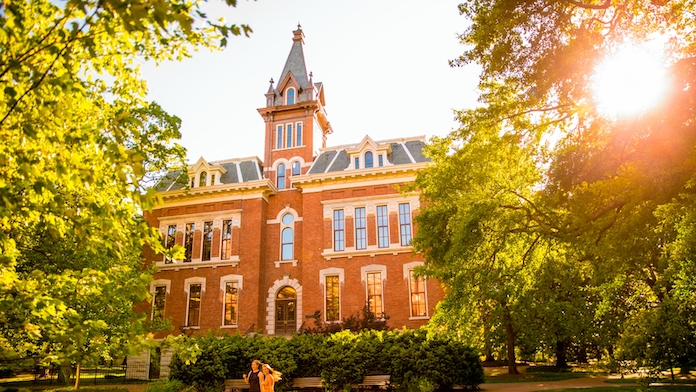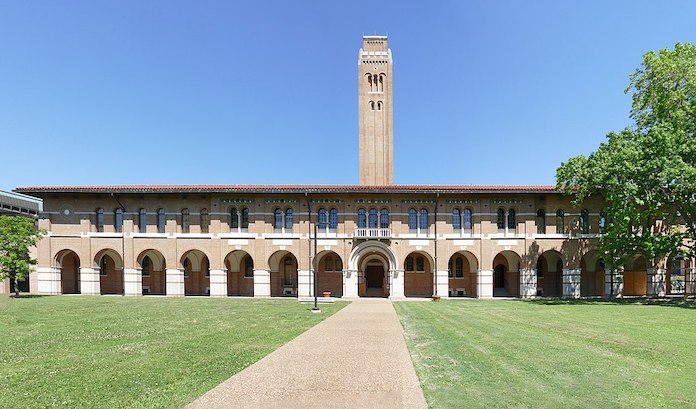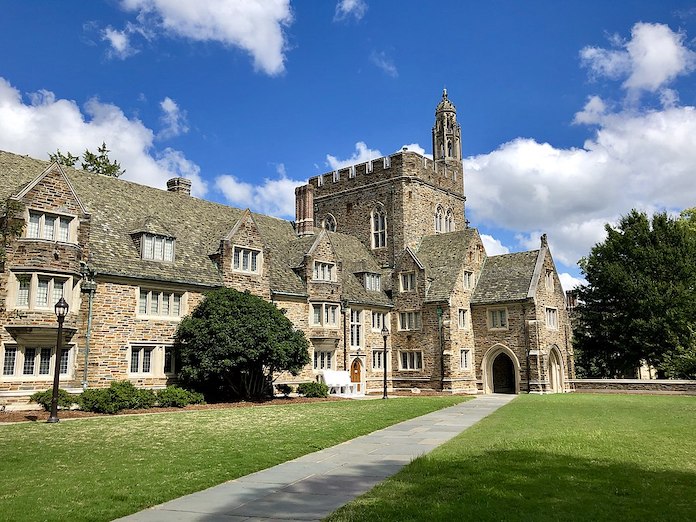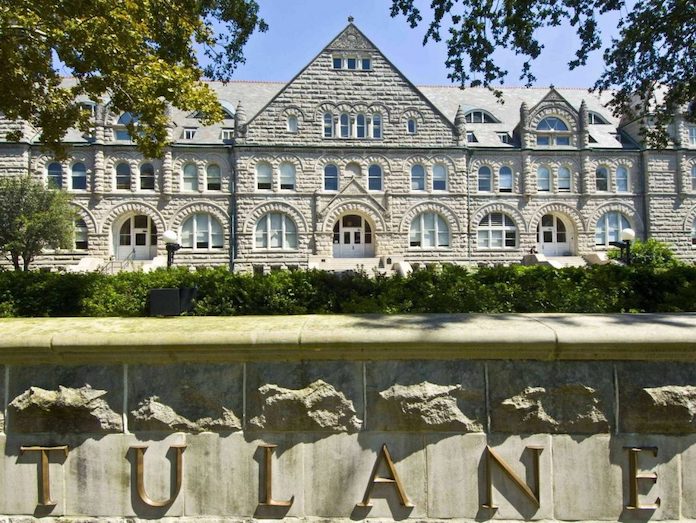The term “Southern Ivies”—meant to denote schools that offer Ivy League-quality educations in the lower half of the United States—has been applied to schools ranging from Davidson College to UT Austin. As with “public Ivies,” there is no consensus on a definitive list of schools in this category. Below, we’ll introduce you to some of our favorite schools in the South. All of the following schools have renowned faculty, exceptional research offerings, and (as the most recent admissions cycle has made clear) very selective acceptance rates.
OUR FAVORITE “SOUTHERN IVIES”
Vanderbilt University
Strong on both academic and athletic fronts, Vanderbilt is a very popular choice among college applicants. The school’s campus—an arboretum located at the heart of Nashville—offers an idyllic setting, surrounded by museums, restaurants, and live music venues. The university allows its 7,000 undergraduate students to explore subjects ranging from economics to elementary education to electrical and computer engineering. One particularly popular choice: the interdisciplinary Human and Organizational Development Major, which focuses on group dynamics, economics, public policy, and organizational theory, making it a favorite among students who hope to go into finance or consulting. Vanderbilt also makes experiential learning a priority for its students through programs like Immersion Vanderbilt, which allows students to carry out research, internships, or performances as part of their undergraduate career. Outside of the classroom, students can participate in some of Vanderbilt’s hundreds of student clubs, join its popular Greek system, or attend sporting events—as the smallest and only private school in the SEC, Vanderbilt is incredibly proud of its athletics. Over the past decades, Vanderbilt has climbed in the college rankings, rising from #21 in the U.S. News and World Report’s list of National Universities in 2002 to #13 in 2022. At the same time, the college has become increasingly selective; as of last year, the university admitted just 6.1% of applicants to its freshman class. Interested students would be wise to apply to Vanderbilt in one of the school’s two Early Decision rounds, both of which offer increased odds of admission. This year, for example, Vanderbilt admitted 15.7% of Early Decision candidates, but just 4.2% of applicants in the regular round. Students also gain an added advantage from applying to Vanderbilt in the November Early Decision I round, rather than waiting for Early Decision II in January. For the Class of 2026, Vanderbilt admitted 24.1% of EDI applicants, but just 10.3% of those who applied EDII. If you know Vanderbilt is the right school for you, don’t hesitate to commit!
Rice University
Founded to serve “residents of Houston and the state of Texas,” Rice University still attracts a large percentage of local applicants. (As of 2022, 36% of the student body hailed from Texas.) In recent decades, however, Rice has become increasingly popular with students from around the world, who are drawn to the university for its flexible curriculum, tight-knit student community, and reasonable price tag. (Rice is currently ranked #6 on the U.S. News and World Report’s list of Best Value Schools.) Its 4,200 undergraduate students have the option of enrolling in over 50 majors; the university is particularly well known for its architecture program, as well as engineering, physics, and astronomy. (The Rice Space Institute regularly collaborates with NASA.) With no Greek system, students’ social lives at Rice generally revolves around the school’s eleven residential colleges. Students are also able to take advantage of the university’s location in Houston, stepping “outside the hedges” to explore the bustling city. As Rice’s popularity has risen, its acceptance rate has plummeted. A decade ago, the university had a 16.7% acceptance rate. This year, Rice’s overall acceptance rate was just 7.7%, down from 9% for the Class of 2026. As usual, Early Decision applicants have a big advantage in the admission process. Rice’s Early Decision acceptance rate for the Class of 2027 was 15.2%.

Application Boot Camp®
Need strategic guidance from start to finish? Try Application Boot Camp®.
Duke University
One of the most prestigious private schools in the South, Duke offers its 6,500 undergraduate students a world-class education on its suburban campus in Durham, NC. With two undergraduate schools—Trinity College of Arts & Sciences and the Pratt School of Engineering—Duke offers students a choice of 53 majors, 52 minors, and 23 interdisciplinary certificates. (Computer science, economics, and electrical and computer engineering are especially popular majors, as is Public Policy, offered by the Sanford School of Public Policy.) For those hoping to pursue subjects outside of these established fields, Program II offers students a chance to develop an individualized degree program of their own design. Duke also has a strong commitment to undergraduate research and interdisciplinary study, which the school aims to foster through opportunities like the FOCUS Program. Many students also enjoy Duke’s status as a “sports school,” with strong athletic teams and enthusiastic fans. (Duke is best known as a basketball powerhouse, but the university also has found success with other sports, including lacrosse and soccer.) Undergraduates can cheer the school on against its rival, UNC—or head to UNC to study for a semester as part of the prestigious Robertson Scholars Leadership Program. Students who plan to apply to Duke are likely aware that the university is selective. For the Class of 2026, the school’s acceptance rate was just 6.3% and it dropped to 5.96% for the Class of 2027. Students can, however, give themselves a leg up in the process by applying in the Early Decision round. Last year, Duke admitted 21.2% of Early Decision applicants, but just 5% of students who applied in the regular round. 16.48% of the students applying in Early Decision to the Class of 2027 were accepted, with only 4.8% admitted in the regular round.
Emory University
A leading research university in suburban Atlanta, Emory is known for both its liberal arts and pre-professional programs. The 5,900 undergraduate students on Emory’s Atlanta campus can choose from more than 80 majors, while also embracing research opportunities with organizations ranging from The Carter Center to the nearby Centers for Disease Control. The university’s Nell Hodgson Woodruff School of Nursing is ranked #2 among undergraduate nursing programs, making it a particularly popular choice. Emory’s undergraduate business program is also very well-regarded, but much like UVA, incoming students are not accepted directly into the program. Instead, students apply to the two-year BBA program after earning 30 credit hours as a student at Emory, ensuring they have a strong liberal arts foundation for their business studies. For students interested in engineering, Emory also offers a dual degree program with Georgia Tech.
Applicants looking for a smaller community may prefer Oxford College, a separate Emory campus open to freshmen and sophomores. Located 45 minutes away from Emory’s main campus, Oxford provides a liberal arts experience for just over 1,000 students, who move to Emory’s Atlanta campus for their junior and senior years. For students who prefer a tight-knit community and smaller class sizes (Oxford classes are capped at 28 students), Oxford can be a great option. However, applicants to Emory will find both campuses very selective. Overall, Emory had a 16.2% acceptance rate for the Class of 2027, including students admitted to both Emory and Oxford Colleges. Many of these students were admitted during Emory’s Early Decision I round, which boasted a 37.4% acceptance rate (31% for Emory College alone). Emory College also admitted 12% of Early Decision II applicants. In the past, applicants have often viewed Oxford College as an “easier” path into Emory, but Oxford has become increasingly selective in recent years. Last year, for example, Emory College admitted 11% of applicants, while Oxford College admitted 15%.
Tulane University
Nearly 8,000 undergraduate students attend Tulane’s New Orleans campus, where they enjoy “the resources of a large research university with the benefits of a small liberal arts college.” While Tulane has a rigorous core curriculum, it also offers students lots of academic flexibility: all first-year students begin their studies in the Newcomb-Tulane Undergraduate College, but from there they can pursue any of the 75+ majors available through Tulane’s five undergraduate schools (Architecture, Business, Liberal Arts, Public Health, and Science and Engineering). Because students have unrestricted access to all schools’ programs, they are able to pursue double or even triple majors across disparate fields. Undergraduates can also take advantage of opportunities at Tulane’s research institutes, including the Stone Center for Latin American Studies and the ByWater Institute. Students often find social outlets through the school’s hundreds of student clubs and campus events, in addition to exploring New Orleans itself. Tulane encourages students to enjoy the city, providing days off from school to celebrate events like Mardi Gras.
Tulane offers four admissions rounds for interested students: Early Action, Early Decision I, Early Decision II, and Regular Decision. Ever since Tulane launched Early Decision as an option in 2016, students who apply in the EDI and EDII rounds have had a significant advantage. For the Class of 2026, for example, Tulane’s overall admit rate was just 8.4%, but the acceptance rate for students who applied Early Decision was a much higher 67.8%. The regular decision acceptance rate, in contrast, is comically low. Last year, Tulane accepted 3,621 students overall, but the university admitted just 106 of them in the regular round. This means that any student interested in Tulane—even the very strong ones—must apply Early Decision or Early Action in order to have a reasonable chance of admission.
WANT TO EXPLORE MORE SOUTHERN SCHOOLS?
Take a look at our overview of public Ivies, which offers introductions to UNC-Chapel Hill and UT Austin, as well as our deep dive into UVA. Our College and University Admissions Profiles also offer insights into universities across the U.S.
- Applying to U.S. Colleges as an International Student - May 7, 2024
- Seniors: How to Finish the Year Strong - January 18, 2024
- Discover Stanford - November 16, 2023








4 replies on “What are the “Southern Ivies”?”
With all due respect, Tulane??? The other 4 are ALL worthy of the southern Ivy moniker. All are usually top 20 ranked schools, or should be. Tulane, however, has never been even in the Top 40 schools in any poll- ever. They had local prestige within the south and competed with true southern Ivies a century ago, but they never attracted the A-Level students the others did, and have never been considered a peer of theirs. Duke, Emory get Ivy applicants, but Tulane get good school applicants, think Wake, Bucknell, Richmond, etc…And all those latter schools would be considered better than Tulane by at least half of those polled. Tulane’s recent drop in acceptance rate is due wholly to a Northeastern-style admissions ploy, whereby all but a handful of RD applicants are accepted and 90%+ of enrolled students come from the Early pile. Has US News rewarded Tulane for this scheme? Let’s see. Nope! Latest US News rank has them tied at #44 with 4 other schools. I realize there exists a great deal of subjectivity to all polls but most times discrepancies are about schools in the same arena. Tulane is not even outside the arena. They can barely see it from their perch way out there. By the way, I have 2 siblings who attended Tulane and it is a good school, but I have a beef with the way some schools game the system to an extreme trying to rise in the polls. Tulane is the new poster child, but certainly better schools are also guilty, the UChicagos the WashUs and of course, the Blueprint for admissions gaming, Northeastern.
Good point on how admissions can ‘game’ the system. Though we were using acceptance rates as a ranking factor, clearly that number can be manipulated by the colleges themselves. Thanks!
When I say Tulane competed with southern Ivies, I meant athletically* only, never academically.
Tulane #73 in 2024 US News Rankings.